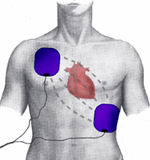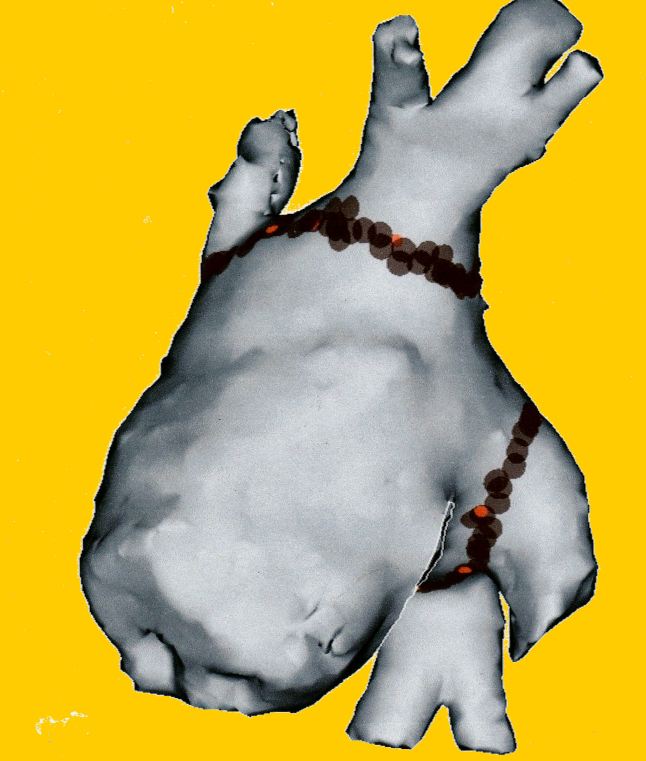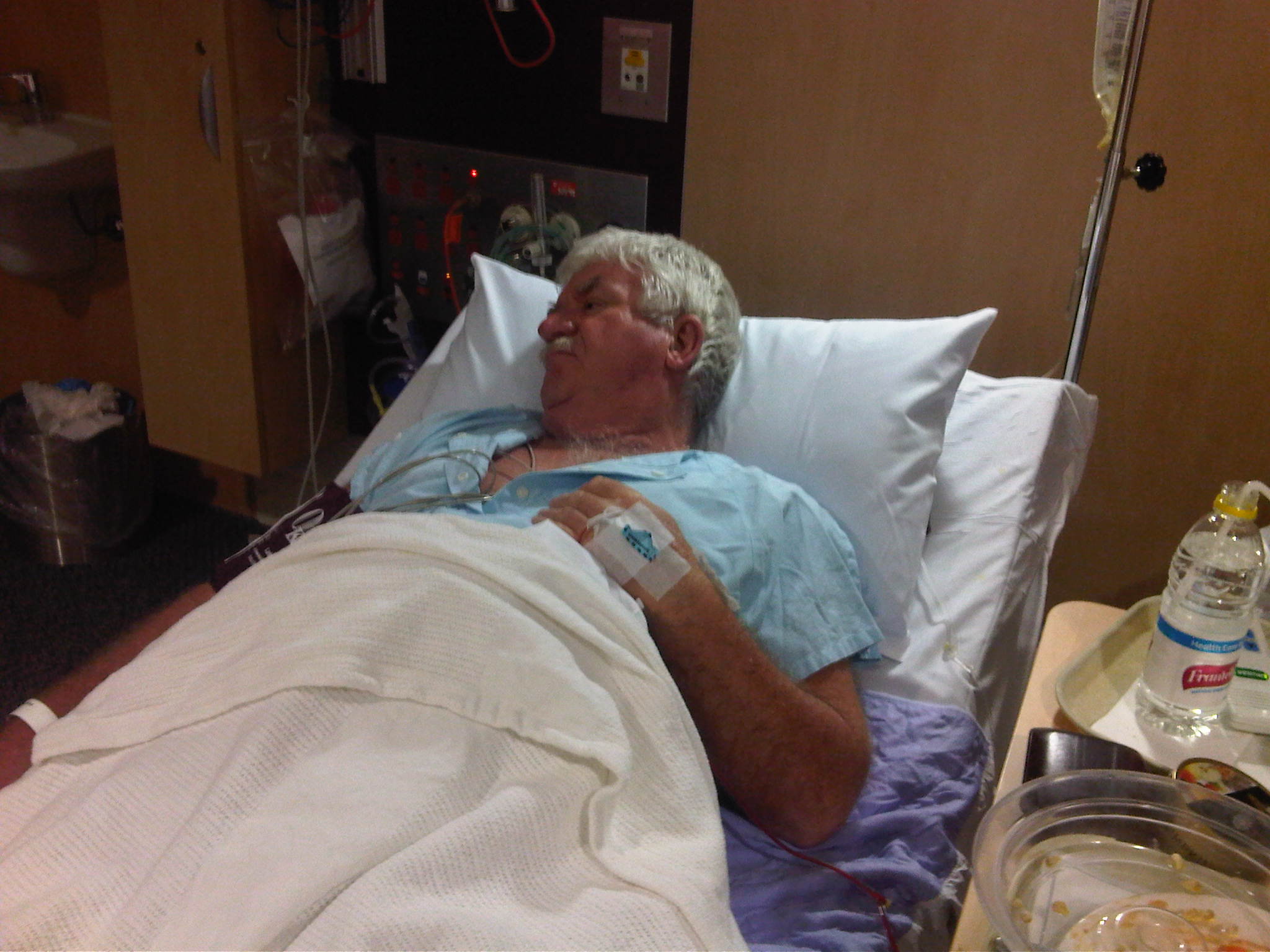|
Radschool Association Magazine - Vol 41 Page 17 |
|
Privacy Policy | Editorial Policy | Profit Policy | Join the Association | List of Members | Contact us | Index | Links |
|
Sick Parade.
If you know someone who is a bit crook, let us know so we can give them a shout out..
|
|
Back Go to page: 1 2 3 4 5 6 7 8 9 10 11 12 13 14 15 16 17 18 19 20 Forward |
|
|
|
Keith Bosley.
Ron Workman advises that Keith Bosley is not well and again is in the John Flynn Hospital which is on the southern end of the Gold Coast. His circumstances have been protracting for 3 years with a decline at the moment that is of concern.
|
|
Johnny Campbell
Phil Birch is sorry to be the bearer of bad news. He says that Johnny Campbell called him recently to tell him that he is dying with cancer. Apparently John has been unwell for some time and about 9 months ago he had blood in his urine. After tests the specialist found a tumour in one of his Kidneys. Unfortunately the tumour had metastasised and major chemo was required but the treatment did not work and John was advised of his prognosis. He and Sue decided to travel so John could complete some of his 'bucket list'. They enjoyed the two months in Europe and Canada finishing in Hawaii. John indicated that he was to try a new treatment only tried on another human but does not expect a positive outcome.
He is in good spirits and has come to grips with his prognosis. We talked about his dying and remembered all the good times we had in the more than fifty years we had known each other. That included talk about ITMT and the various people he met in that group. He holds all of us in very high regard.
He was an original on 1 TMT before accepting a commission.
|
|
|
|
After Nigeria was eliminated from the World Cup, the Nigerian goalkeeper personally offered to refund all the expenses of fans who had travelled to the games. He said he just needs their bank details and PIN Numbers to complete the transaction.
|
|
|
|
Atrial Fibrillation.
Atrial Fibrillation, or as it is more commonly known, AT, is a common heart problem experienced by many in the community. Normally the heart, which is a bit like a refrigerator compressor with a suction stroke and a discharge stroke, sucks in then pumps out blood (called a beat) in a regular rhythm at the rate of about 60-80 beats per minute. This regular rhythm occurs as a result of electrical discharges that travel through the heart and cause the muscles of the heart to contract. In atrial fibrillation, the electrical discharges are irregular and rapid and, as a result, the heart beats irregularly and, usually, rapidly.
Normal function of the heart.
This amazing piece of
your body has four chambers. The upper two chambers are called the atria,
and the lower two are the ventricles. Blood, which contains low
levels of oxygen and high levels of carbon dioxide, is sucked from
the body to the
The heart must deliver enough blood to the body for the body to function normally and the amount that is pumped depends on several factors, the most important of which is the rate of contraction of the heart (the heart rate). As the heart rate increases, more blood is pumped.
Each beat is caused by an electrical discharge (current) that passes through the electrical circuit of the heart. This electrical discharge, which is a trigger pulse, causes the muscles of the atria and ventricles to contract and pump blood. The electrical system of the heart consists of the SA node (sino-atrial node), the AV node (atrio-ventricular node) and special tissues in the atria and the ventricles that conduct the current.
The SA node is the heart's electrical pacemaker. It is a small patch of cells located in the wall of the right atrium and the frequency with which the SA node discharges determines the rate at which the heart beats. The current passes from the SA node to the AV node which serves as a relay and passes current between the atria and the ventricles.
These discharges cause the atria to contract and pump blood into the ventricles. The same discharges are then relayed to the ventricles, causing the ventricles to contract. In a normal heart, the rate of atrial contraction is the same as the rate of ventricular contraction. At rest, the frequency of the electrical discharges originating from the SA node is low, and the heart beats at the lower range of normal (60-80 beats/minute).
During exercise or excitement, the frequency of discharges from the SA node increases, increasing the rate at which the heart beats. Iím 67 so my heart has beaten somewhere between 2,112,912,000 and 2,817,216,000 times, that's Billions Ė amazing!!
Thatís the way itís all supposed to happen.
During AT, electrical discharges are not generated solely by the SA node, instead, they also come from other parts of the atria. These abnormal discharges are rapid and irregular and may exceed 350 discharges per minute. This causes ineffective contractions of the atria and reduces its ability to pump blood as it should.
These irregular discharges then pass through the AV node and into the ventricles, causing the ventricles to also contract irregularly and (usually) rapidly which means they do not have enough time to fill with blood before the next contraction. This effectively reduces the amount of blood pumped by the heart Ė Not good!!!
Many patients with AT have no symptoms and are unaware of the abnormal heart rhythm. Of those that do, the most common symptom is palpitations, an uncomfortable awareness of the rapid and irregular heartbeat where it feels like the heart gyros have toppled and it is about to leap out!! Other symptoms, which are caused by the diminished delivery of blood to the body include:
∑ dizziness, ∑ fainting, ∑ weakness, ∑ fatigue, ∑ shortness of breath, and ∑ angina (chest pain due to reduced blood flow to the heart muscles).
There are a few side effects to AT, one of which is premature death, something that should normally be avoided. If the heart is unable to pump an adequate amount of blood to the body, the body begins to compensate by retaining fluid which can lead to a condition called heart failure. Definitely not nice!. It can also cause blood inside the heart to stagnate and form blood clots. Sometimes, these blood clots dislodge, pass through the heart and lodge in the brain, lungs, and other parts of the body. This process is called embolization and if and when a clot forms in the brain it can cause a stroke Ė also not nice!!
So what do you do??
The first thing your doctor would normally do is bung you on Warfarin which is a medication that keeps your blood at an acceptable viscosity. They call this an INR (which is short for International Normalized Ratio) and they try and keep it at around 2.5. They do this by taking a blood test, analysing the blood, then altering the Warfarin dose until they get the INR somewhere between 2 and 3. A normal personís INR is between 1 and 1.5, so the higher the number the thinner the blood.
Chronic sustained atrial fibrillation can sometimes by treated quite successfully with medications (chemical cardioversion) or by electrical shocks (electrical cardioversion). If the chemical cardioversion doesnít work they will try the electrical version but usually these will be unsuccessful in the long run unless the patient has or is:
∑ Younger than 65 years of age ∑ Had atrial fibrillation for a short time (less than 12 months) ∑ Normal-sized atria and ventricles ∑ Having their first episode of atrial fibrillation.
Iíve had AT for some years and unfortunately, neither cardioversion worked with me. Iíve had seventeen million blood tests, been on tablets for yonks and have had 4 electrical reboots Ė they all worked for a short period but then the gyros topple, the mounts sheer off and the heart starts doing the hootsie tootsie all over again.
If youíve never had a hospital reboot, itís not like you see in the movies. For starters youíre out cold under a general anaesthetic and donít feel a thing. There are no round hamburger type pads and doctors yelling ďClearĒ and patients bouncing 2 foot vertically off the bed, itís quite civilised really. In pre-op youíre shaved on the chest, on the right side and on the back on the left side, then youíre trolleyed down to the theatre where they stick 4 inch square flat patches onto your shaved skin, they store these patches somewhere down near the south pole, then itís good night Irene and you wake up in recovery feeling like you could take on Deke in a 26 miler.
But as these procedures
didnít last, they decided to give me the works Ė a
Cardiac Ablation.
This is a procedure where they once again shave you in pre-op, but
this time they get the most gorgeous nurse they can find and she
gets you to strip naked, to lay on your back on the bed and itís out
with the little old electric razor and into the hairs around your
precious bits Ė you might say, just a bit embarrassing. Then
itís down to the theatre with just a sheet between you and all
youíre worth and onto the big table. While youíre being hooked up to
all sorts of things, you still have the sheet hiding all your bits
but you know as soon as the lights go out, off will come the sheet
and youíll be on display for all concerned and you just hope they
don't all point and roll around the floor laughingÖÖembarrassing X 2.
A Cardiac Ablation is a procedure where they make two incisions, one in each leg, right in the groin area, and they poke a skope iron up one side until it reaches your heart and up the other goes a flood lamp and a TV camera so they can see what they are doing. They then find where the nasty trigger pulses are coming from and hit that area with the scope and burn the tissue which leaves a scab and acts just like an insulator, stopping the electrical discharges. The pic at right is what they did to me with the dark dots being the insulators (the burnt bits).
If you like that sort of stuff you can see a YouTube video on the procedure HERE.
The procedure can take up to 4 hours and being away with the fairies you have no idea how long it takes. You eventually come to in recovery, plugged into all sorts of gadgets and with nurses popping in and out every few minutes checking on you and as time passes realisation slowly returns.
|
|
|
|
|
|
After a sleep-over, in which time they pump a litre of the good stuff into your arm, take buckets of your blood, do two or three ECG tests and check your blood pressure with an automatic thing that knows when you're just about to nod off, they declare you a fit and proper person suitable to join other mortals and youíre allowed home but not before your stitches have to come out.
This is where they really get you, the stitches are very small and of course the person they get to take them out is a pretty young nurse, about the same age as your youngest daughter, and she has to get down real close to see what she's doing. You find a spot on the ceiling and focus on it as hard as you can and try and think of the last time you got bogged, or fell off the bike - anything apart from what's going on in your nether region.
I had my Ablation on the 24th September at Greenslopes Hospital in Brisbane and must say that the service, care and consideration I received from all concerned could not be beaten, a big big thank you to all concerned.
Now, letís hope it works!!!!
|
|
An old man was asked, "At your ripe old age, what would you prefer to get - Parkinson's or Alzheimer's?" The wise one answered, "Definitely Parkinson's. Better to spill half a glass of wine than to forget where you keep the bottle!" |
|
|
Back Go to page: 1 2 3 4 5 6 7 8 9 10 11 12 13 14 15 16 17 18 19 20 Forward |






